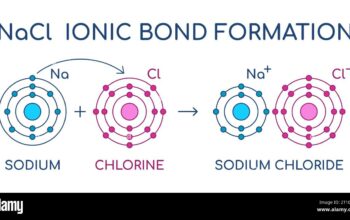Atomic clocks represent one of the pinnacles of modern precision timekeeping, functioning based on the oscillations of atoms. They are pivotal in various scientific fields, including telecommunications, satellite navigation, and fundamental physics. Understanding where atomic clocks are located and their significance can unravel the intricate tapestry of timekeeping technology and its applications.
1. Understanding Atomic Clocks
At the core of the atomic clock’s functionality lies the atomic resonance phenomenon, whereby specific atoms, such as cesium or rubidium, exhibit characteristic frequencies when subjected to microwave radiation. The most prevalent type, the cesium atomic clock, has established the international standard for the second. The location of these sophisticated devices extends far beyond conventional clock towers. They inhabit laboratories, observatories, and satellite systems, reflecting their critical role in global timekeeping.
2. Laboratory Locations
Laboratories around the globe are the primary settings for atomic clock development and research. Institutions such as the National Institute of Standards and Technology (NIST) and the European Organization for Nuclear Research (CERN) house state-of-the-art atomic clocks. At NIST, the advanced cesium fountain clocks represent the forefront of timekeeping technology, featuring a highly stable performance that substantially reduces uncertainty in time measurement.
Within these laboratories, scientists meticulously calibrate and refine atomic clock technology, pushing the boundaries of how precisely we can measure time. The research conducted in these settings emphasizes both the theoretical and practical aspects of time measurement, unlocking new avenues in quantum physics and relativistic time dilation.
3. National Timekeeping Standards
Countries around the world boast national laboratories tasked with maintaining and disseminating accurate timekeeping standards. These facilities serve as reference points, ensuring that local timekeeping systems align with international standards. For instance, the UK’s National Physical Laboratory (NPL) and Japan’s National Institute of Information and Communications Technology (NICT) are pivotal in establishing national time standards, closely monitoring the atomic clocks under their jurisdiction.
Moreover, international collaboration is crucial. The International Bureau of Weights and Measures (BIPM) collaborates with various national laboratories to synchronize atomic clocks globally. Through meticulous coordination, they maintain a collective international time standard known as Coordinated Universal Time (UTC).
4. Satellite-Based Atomic Clocks
As the realms of navigation and communication have evolved, so too has the role of atomic clocks. Notably, the Global Positioning System (GPS) comprises satellites equipped with atomic clocks to deliver precise location data anywhere on Earth. Each GPS satellite operates with highly accurate atomic timekeeping mechanisms, ensuring the synchronicity necessary for accurate trilateration.
The atomic clocks aboard these satellites must be regularly monitored and calibrated, as their performance can be affected by factors such as gravitational time dilation. This adjustment process ensures the integrity of navigational data, allowing for the seamless functionality that modern society relies upon.
5. Relativity and Atomic Clocks
The relationship between atomic clocks and the theory of relativity epitomizes the intersection of timekeeping and fundamental physics. When positioned at differing altitudes or velocities, atomic clocks demonstrate a remarkable variance in ticking rates—a phenomenon predicted by Einstein’s theories of general and special relativity. Research institutions utilize this nuanced behavior to refine our understanding of time itself, as well as to validate aspects of relativistic physics.
For example, experimental setups involving jet airplanes carrying atomic clocks provide empirical evidence supporting relativistic time dilation. The findings from these investigations lend credence to the relativity concepts and substantiate atomic clocks’ role in experimental physics.
6. Future Directions and Innovations
The field of atomic clocks is poised for continual evolution. Emerging technologies, such as optical lattice clocks and ion trap systems, promise unprecedented levels of precision, surpassing even the current cesium-based standards. These innovations are anticipated to enhance various applications, ranging from quantum computing to improved GPS accuracy.
Furthermore, advancements in quantum technology will likely revolutionize timekeeping. As researchers strive to harness quantum entanglement, we may witness new classes of clocks that challenge conventional notions of accuracy and stability. The potential applications for such technologies span not only scientific realms but also everyday life, where precision timing is becoming increasingly critical.
7. Summary
The locations of atomic clocks highlight their significance in both scientific research and practical applications. From national laboratories to satellites orbiting Earth, these devices represent humanity’s quest for precision in timekeeping. As technology progresses, the importance of atomic clocks will only increase, unlocking further mysteries of the universe and enhancing our day-to-day experiences in ways beyond our current comprehension.
Through understanding the geographical and practical implications of where atomic clocks are located, we gain insight into the crucial link between time measurement and the technological advancements that define modern society.












